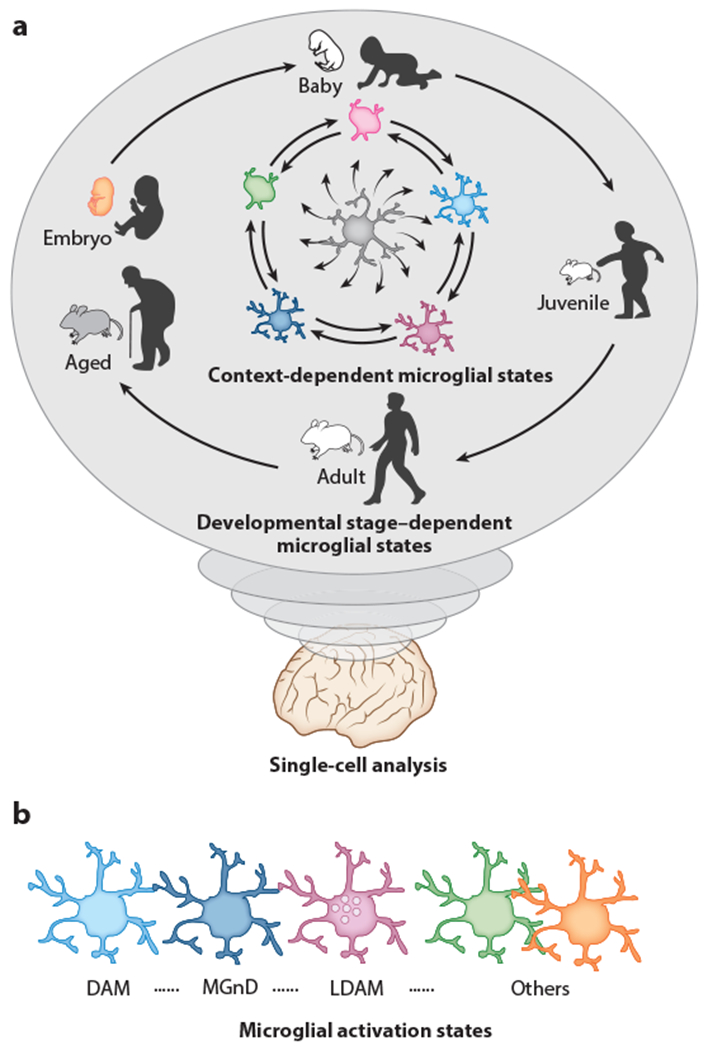Figure 4.

Developmental and context-dependent diverse states of microglia in mice and humans, (a) Different single-cell analyses (scRNA-seq, CyTOF, etc.) revealed that microglia possess highly plastic capacity, thereby altering the molecule (RNA, protein, etc.) expression profile during the course of homeostatic development, aging, or disease progression in a context-dependent manner, (b) Activated microglia states are highly divergent. For instance, scRNA-seq analyses deciphered that DAMs (153) or MGnDs (154) found at sites of neurodegeneration represent transcriptionally distinct profiles with high expression levels of Apoe, Clec7a, Itgax, Cst7, and Spp1 and reduced expression of P2ry12 and Tmem 119. In contrast, LDAMs (157) enriched in the central nervous system of aged mice, in which they accumulate lipid droplets, are defective in phagocytosis with massive production of reactive oxygen species and secretion of proinflammatory cytokines and chemokines such as IL-10, IL-6, CCL3, CCL4, and TNF-α. Abbreviations: CyTOF, cytometry by time-of-flight; DAM, disease-associated microglia; LDAM, lipid-droplet-accumulating microglia; MGnD, neurodegenerative microglia; scRNA-seq, single-cell RNA sequencing.
